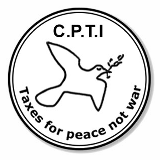The researching and production of this report was funded by a grant awarded to CPTI by the Joseph Rowntree Charitable Trust for A systematic thematic compilation of information on military recruitment policy and practice world-wide, with a particular emphasis on provisions for conscientious objection.
Much of the history of conscientious objection has, inevitably, been written by conscientious objectors. It is therefore no great surprise that the philosophy and growth of conscientious objection movements and the sufferings of individual conscientious objectors should have been exhaustively documented. This paper, therefore, concentrates instead on the legislative moves to accommodate conscientious objection, trying to place these in the context of the overall military recruitment systems and of the developing international standards in this field. It is hoped that the thematic approach, drawing out common features and issues across different national situations, will complement the country-by-country analysis in the 1998 Refusing to bear arms
survey and the 2005 update of the European entries (see box). However this report should certainly not be seen as a substitute for the comprehensive detail of those analyses.
The most recent complete survey of the situation facing conscientious objectors world-wide was conducted by Bart Horeman and Marc Stolwijk and published in 1998 by War Resisters International under the title Refusing to bear arms
. In 2005 an update by Marc Stolwijk of the European entries was published by the Quaker Council for European Affairs. The original survey and the updates are both available on the WRI website at wri-irg.org/co/rtba/. In order not to further burden this report with repetitive footnotes, it should be stated at the outset that any information on the situation in a State in Europe which is not otherwise referenced may be found in therelevant country entry of the 2005 update.
The original proposal for the research reported here, as drawn up in the Summer of 2004, referred to two sources which had recently become available. The first was the file held in the Office of the UN High Commissioner for Human Rights of the replies to a questionnaire, sent out in 2003 to governments, international organisations, national human rights institutions and non-governmental organisations, in order to obtain information for the analysis of best practices
which the Office was preparing for UN Commission on Human Rights (UN Document Number E/CN.4/2004/55). The second was the draft country entries being received by the Coalition to Stop the Use of Child Soldiers for their Child Soldiers Global Report 2004; some of these drafts, to which the researcher was given confidential access, contained more detailed information on provisions for conscientious objection than was required for the Global Report. The situation regarding conscientious objection is however moving so rapidly that it has been necessary to update and supplement the information contained in these sources. This paper also draws heavily for detailed examples of the issues discussed on the research done for a series of briefings which CPTI has prepared for the UN Human Rights Committee since the Summer of 2004 on the situation regarding conscientious objection in States reporting under the International Covenant on Civil and Political Rights.
